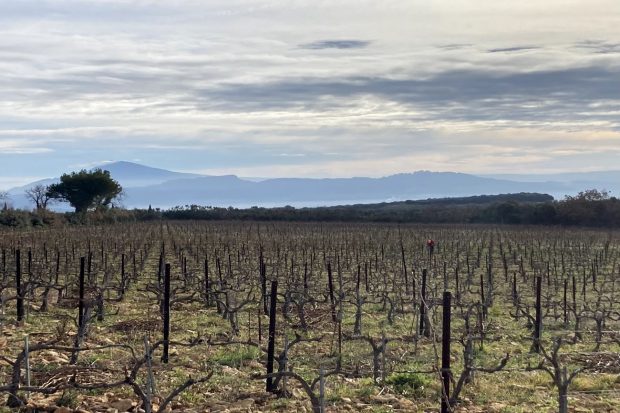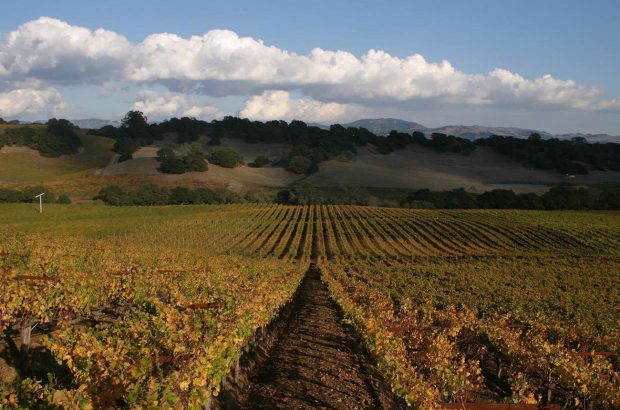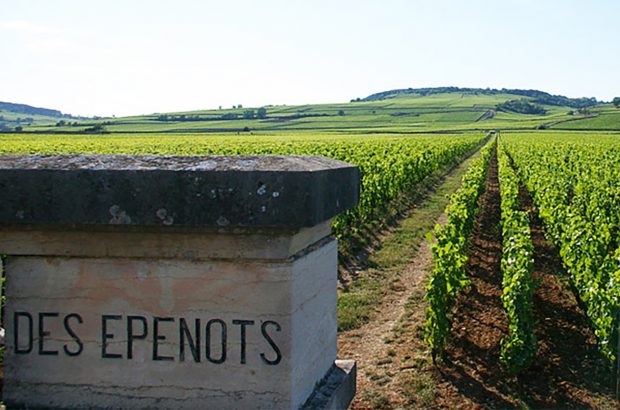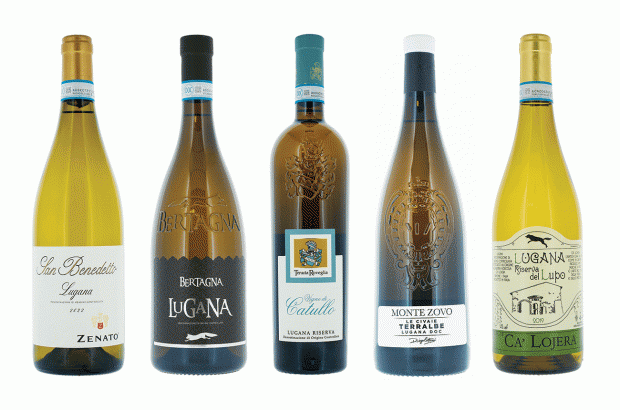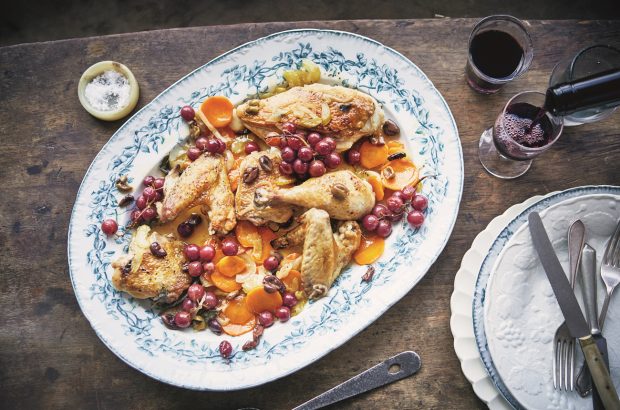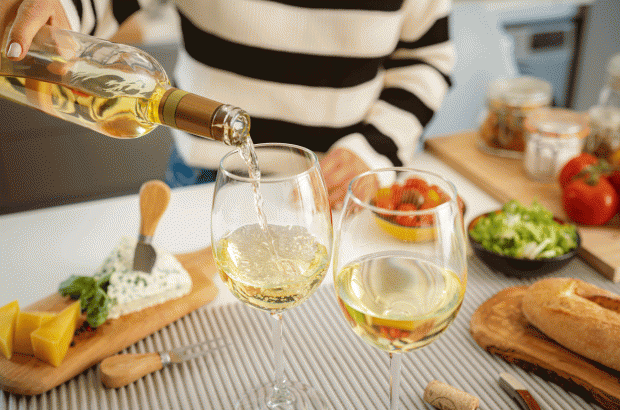- In the 1960s the appellation’s future looked far from sure.
- The white Viognier does well in the Côte Blonde.
- A growing number of single vineyard bottlings.
- Choice of plant is of prime importance.
The hillslopes of Côte-Rôtie are one of the most imposing viticultural sights in the world. A stairway of narrow terraced vineyards on vertiginous schistous slopes cascade down to the edge of the River Rhône. Dry-stone walls and a regiment of wooden pickets restrain the avalanche of vines. Seen in winter the region can be bleak, chill and austere, and in summer, with the sun glinting off the Rhône, hot, dry and scorched. In this rugged setting the vigneron remains the vital element, for with mechanisation out of the question it requires a broad back and steely temperament to cultivate the vine. Two world wars and the industrial development of the Rhône Valley led to a diminishing workforce and the abandonment of vineyards. Compounded by a fall in value and demand for the wine, producers turned to farming, while the young moved on to more lucrative jobs. By the 1960s, with only 50 hectares under production, the appellation’s future looked anything but sure.
With the revival of interest in the wines of the Northern Rhône in the late 1970s, spearheaded by the growing reputation of Etablissements Guigal in Ampuis, economic confidence returned and with it an increase in plantings and a revival of youthful attachment for the land. During the 1980s a solid core of growers in their 20s slowly established themselves by renting and buying land. The rate of planting continued into the 1990s to arrive at the present 200ha under vine producing an average 8,000 hectolitres, or just over a million bottles a year.
The characteristics of Côte-Rôtie are its deep colour, exuberant aromatic spectrum of dark fruits, violet and spice, intensity of flavour and elegantly textured palate. The harmony provided by fruit, weight and velvety texture makes it appealing when young but this shouldn’t belie its ability to age for a considerable time. Methods of winemaking with various levels of extraction, optional destemming and the use of new oak barrels offer many nuances in style as do the different vintages. Recent years have all been notable, with 1995 full-bodied and firmly structured, 1996 lighter but elegant with a marked note of acidity, and 1997 rich, ripe and finely structured. In 1998, volumes were down 15 per cent due to spring frost but the wines again appear promising.
The vineyards of Côte-Rôtie – or ‘roasted slope’ – are the most northerly in the Rhône. Located on the river’s right bank, 30km south of Lyon, they cover eight kilometres from north to south through the communes of Saint-Cyr-sur-le-Rhône, Ampuis and Tupin-et-Semons. The climate here is continental with, in addition, the cool, dry, northerly, and warmer, rain-bearing southerly winds, blowing intermittently throughout the year. In such conditions Côte-Rôtie’s grape, Syrah, has more difficulty arriving at optimum maturity than in the Mediterranean climes further south, as witnessed by the natural alcohol potential which rarely exceeds 12 degrees.
As the vineyards tuck and fold their way along the course of the river, the prime sites all have a southern or southeastern exposure and shelter from the winds. Vineyards on the plateau 350m above the valley floor are evidently more exposed and have a later period of ripening.
Generally speaking, the area south of Ampuis is known as the Côte Blonde due to the lighter coloured schist-gneiss soils while to the north the darker, ferruginous, schistous soils are referred to as the Côte Brune. Another interpretation links the different hills to a myth concerning the fair and dark-haired daughters of the Seigneur de Maugiron. The white Viognier, (permitted up to 20 per cent in Côte-Rôtie but rarely used to this extent) does well in the Côte Blonde, adding to the notion that wines from this sector are lighter and more fragrant than those from the Côte Brune which are fuller and more firmly structured.
Local lore has always maintained a vocabulary for individual vineyard sites. Marcel Guigal introduced the general public to the idea with the release in 1966 of La Mouline from a vineyard in the Côte Blonde and in 1978 La Landonne from the Côte Brune. Since then, 72 specific vineyard sites – or lieux-dits – have been officially designated, including La Landonne and a delimited Côte-Brune and Côte-Blonde, and only these can be used on the label. Guigal’s La Mouline and La Turque are not registered sites but he has circumvented the problem by having them listed as trade names. In reality the bulk of Côte-Rôtie is normally produced from a range of different vineyards but there have been a growing number of single vineyard bottlings or special cuvées all of which sell at a premium.
In terms of production, Etablissements Guigal accounts for a third of the volume; Guigal Côte-Rôtie, the standard-bearer. Other northern Rhône négociants, like Chapoutier, Jaboulet and Delas Frères, offer Côte-Rôtie, but these apart, the solid core of young growers that established themselves in the 1980s are still very much in evidence. They have maintained the appellation, ensured its growth and survival and improved the level of quality. In the north at Vérenay, the husband-and-wife team of Gilbert Clusel and Brigitte Roch produce one of the most finely textured and elegant wines in Côte-Rôtie. Clusel started with only a quarter of a hectare in 1980 and has steadily rented, bought and replanted land. By 1987 the Clusel-Roch holding was three hectares. The vineyard remains a priority with yields held to 35hl/ha (appellation limit 44hl/ha), the absence of fertilisers and over the last six years gradual replanting with vines produced by mass selection from their own vineyards. ‘The choice of plant is of prime importance and now we select the vines and rootstocks and do our own grafting we are certain that our wines are becoming more aromatic,’ explains Roch.
In the cellars, the grapes are vinified with stems for roughly 15 days. The press wine is then added back to the free-run and the wine aged in oak barrels. The regular cuvée is permitted 15 per cent new oak while the designated vineyard Les Grandes-Places, from 60-year old vines and more structured in style, is aged in 50 per cent new oak casks. Aged for 24 months, they are neither fined nor filtered. Also with cellars in Vérenay, Jean-Michel Gérin produces wines of a contrasting style from his six-hectares. Yields are again low and grapes picked at optimum ripeness, but thereafter there is a heavier extraction and ageing in new oak barrels. The grapes are destemmed, fermentation terminated at 38°C and maceration extended over a month. Both the individual vineyard bottlings, La Landonne and Les Grandes Places, are then aged in 100 per cent new oak barrels with the regular cuvée, Champin le Seigneur, from vines in six different lieux-dits, in 30 per cent new oak. There’s also the cuvée Champin Junior produced since 1994 from young vines, aged in 70 per cent new oak. The oak is dominant in youth but the wines all have a rich, suave texture and expressive fruit, particularly Les Grandes Places.
On the plateau behind Ampuis at Le Champin, Bernard Burgaud produces a single wine from his four hectares. Like Gilbert Clusel he started in 1980 and has steadily acquired land in several vineyards on the Côte Brune. He initially sold to the négociants but turned to bottling his own wine because of the demand. Some vines are at a higher altitude (350m) and so harvested later. ‘The alcohol potential in late-ripening zones like Le Champin is as high as anywhere providing yields are controlled,’ he says. Acidities, though, are usually a little higher adding freshness and structure to the wines. Deeply coloured, less aromatic than some but honest in style, they repay with dividends five or six years’ bottle age.
Jean-Luc and Jean-Paul Jamet are also based on the plateau at Le Vallin where they’ve built new cellars. There are now 25 parcels of vines from 10 different lieux-dits covering 6.5ha. The terroirs range from the plateau to the foot of the slopes and from these, they produce medium-bodied wines with generous ripe, attractive fruit. A number of producers also have vineyards in Condrieu and Saint-Joseph and are based outside the Côte-Rôtie delimitation. Yves Cuilleron’s cellars are in Chavanay while his 1.5ha of Côte-Rôtie are in the Coteaux de Semons. The soils here change to schist-gneiss with a sandy topsoil hence the 10 per cent Viognier in the wines. Whereas Cuilleron harvests the Viognier for his Condrieu extremely late, the Syrah and Viognier for his Côte-Rôtie Côteau de Bassenon are not pushed to the same limit. He is, however, a partisan of new oak, using as much as 100 per cent in recent vintages.
In the early 1980s, Yves Gangloff bought and planted two hectares in the Côte Blonde initially selling the grapes and then the wine to Guigal. From 1992 he has bottled all his own wine creating a cuvée for the young vines, La Barbarine, and another for the lower yielding old vines. The latter is aged in 20 per cent new oak barrels. Pierre Gaillard in Malleval started as vineyard manager for Vidal-Fleury then moved to Guigal in the 1980s while creating his own domaine. He now has 16ha (three in Côte-Rôtie). His grapes are harvested ripe but not overripe. ‘I like my wines to be fresh and aromatic which means not going beyond a certain level of maturity,’ he explains. A cold (8°C) pre-fermentation maceration follows and then pigeage and remontage during the fermentation. Two cuvées – a regular Côte-Rôtie and La Rose Pourpre from vines in the Rozier vineyard of Côte Brune – are aged in 100 per cent new oak barrels for 18 months. The next generation has been slower to manifest itself, but this appears to be changing. Stéphane Ogier has joined his father Michel, while in Tupin-et-Semons David Duclaux has been at the family estate since 1994, and is steadily pursuing a much needed policy of improvement, including reducing yields. The hillslopes of Côte-Rôtie may offer an aura of magic and the potential for greatness in the wines, but man remains an irreplaceable link in the chain.





